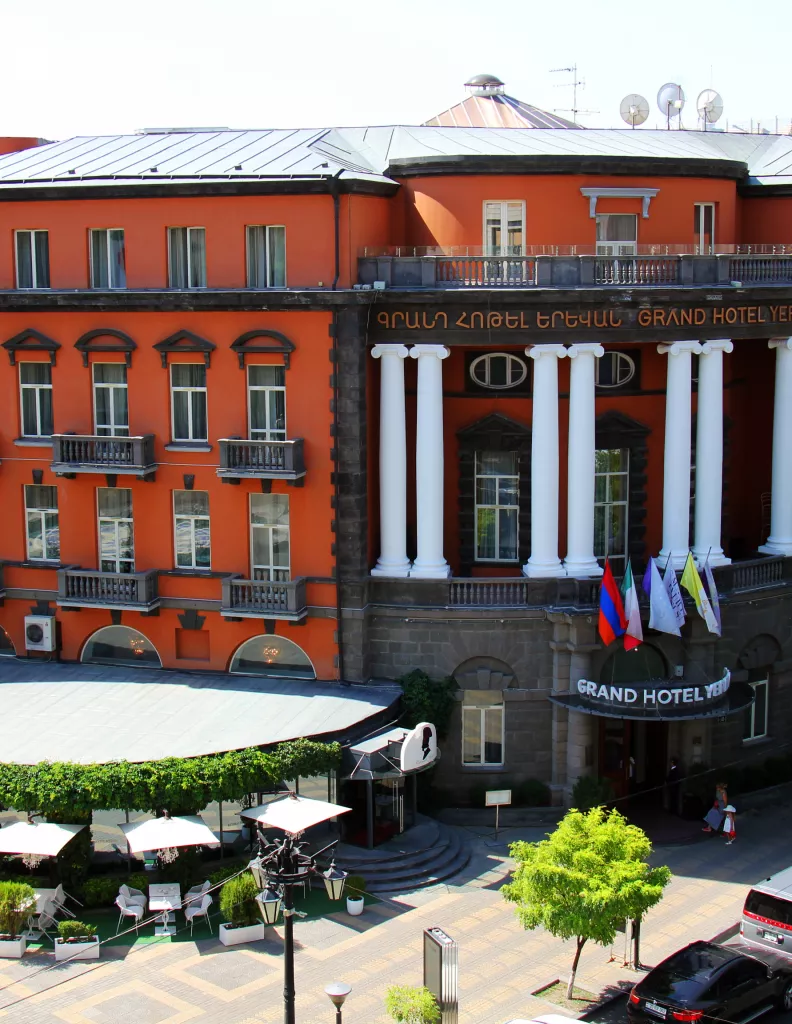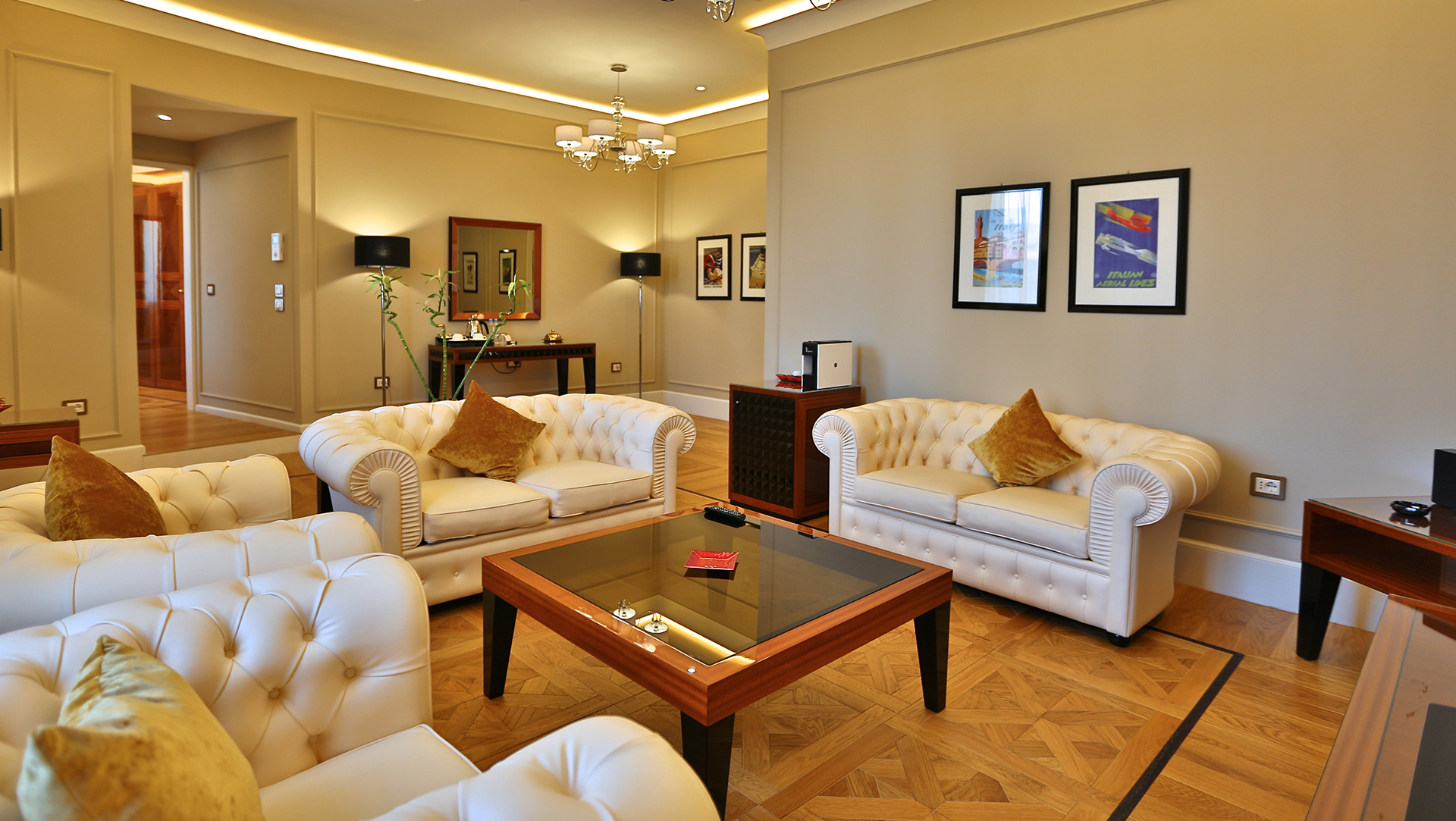
The history of the Grand Hotel Yerevan
After more than twenty years, Renco and the Grand Hotel Yerevan will part ways as the historical hotel will be sold to an Armenian group. We are talking about the Armenian capital’s most famous hotel, built in the late 1930s during the Soviet era and later purchased by the Pesaro-based group as its first investment in Armenia.
The acquisition of the Grand Hotel was viewed by Armenia’s citizens as a act of generosity. All cities have their symbolic buildings and the Grand Hotel, with its three storeys, was Yerevan’s tallest building in the 1930s. Works began in 1926 and were completed in 1928. At the time it was a small three-storey skyscraper. But what made it extraordinary was its colours, elegance and Art Deco style. Among other things, it was the city’s first hotel and became a favourite destination for lots of famous people who travelled to Armenia in those years.

Formerly part of the Intourist chain, the Grand Hotel became a regular destination for intellectuals, writers, poets, scientists, architects and stage and film actors, who often stayed at the hotel for weeks: they even exchanged their houses in distant lands for a room at the hotel.
The relations with Armenia
Rinaldo Gasparini had grasped the importance of Armenia on the global stage and of its people, 4 million of which are scattered through the diaspora. Renco’s ability to stay ahead of its time fostered continuous investments in Armenia as the company built the Italian Embassy, the ambassador’s residence in Yerevan and the prestigious headquarters of the Armenian Central Bank with three heliports.
The public-private partnership involving the old Soviet velodrome was another major urban renewal project in the Armenian capital: from it emerged the Congress Hotel and the Piazza Grande multifunctional building. Meanwhile, the new velodrome was built on the outskirts of the city. Renco’s latest project in Armenia is also the most important one: the gas-fired power station, which generates most of the country’s electricity, was designed, built and is managed by a company set up by Renco. In partnership with Siemens. The power station also diminishes the reliance on the nuclear power plants dating from the Soviet era and provides energy for the country’s renewed industrial development. Renco’s industrial presence in Armenia is as strong as ever. Another noteworthy event is the Renco Group’s decision to sell, after 24 years, the Grand Hotel Yerevan to an Armenian group.
Charles Aznavour’s room
The Yerevan Hotel was renovated in 1944 when the war was about to end and then again in 1974, when the first signs of modernity began to creep into it. The ties with Renco date from 1998, when the company purchased the hotel through an auction and proposed to renovate the building, which had been lying in decay for sixty years and housed public offices in many of its rooms.
The project submitted by Renco was very attentive to architectural and historical aspects: “The hotel had shrunk to half its original rooms,” recounts Massimo Scaloni, “so we built a new wing in the building’s inner court and a rooftop pool with the relevant facilities. We expanded the rooms to 104 and the inner part was converted into the hotel’s inner court and parking lot with the entrance through a tunnel. The facility turned into a grand hotel and a room was reserved for Charles Aznavour whenever he travelled to Armenia. After his passing, the room was named after him and currently contains some of his personal belongings coming from the Aznavour Museum. The works were completed in April 2000 with the present-day 104 rooms”.